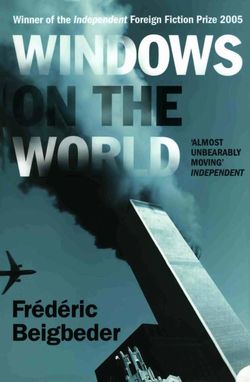Читать книгу Windows on the World - Frédéric Beigbeder - Страница 17
8:40
ОглавлениеThe guidebooks all gave Windows on the World glowing reviews. Here at the top of the Tour Montparnasse on a September morning in 2002, I leaf through them. A year after the tragedy, they take on a strange resonance. For example, the Michelin Green Guide 2000 writes:
Windows on the World, One World Trade Center (107th floor). This elegant restaurant bar boasts the most stunning panoramic views of New York. Since the infamous bombing attempt in 1993, considerable renovation has allowed it to reinvent itself with a sumptuous new interior.
The World Trade Center was a target; something even the guidebooks realized. It was no secret. On February 26, 1993, at 12:18 PM, a bomb in a pickup truck in the parking lot exploded. The basement of the World Trade Center collapsed. A deep crater, six dead and a thousand injured. The towers were refurbished and reopened within a month.
Frommer’s Guide 2000 is more effusive:
Windows on the World (West St between Liberty and Vesey). Main $25-35; Sunset menu (before 6 PM) $35; Brunch $32.50. Cards: VISA. Subway: C, E, World Trade Center. Valet parking on West Street, $18. The interiors are sober but pleasing. In any case, they are of little importance as, just outside the “Windows” all of New York is unfurled! The restaurant offers unassailable views of the city. And with Michael Lomonaco, former chef at Club 21, now at the helm, the Modern American cuisine is second to none. The cellar, too, is full to bursting. The sommelier is happy to point you in the right direction, whether you are a connoisseur or simply an amateur looking to perfectly complement your Char-grilled cutlets or Homard de Maine, two of Lomonaco’s specialties.
In a magazine article, I read that two inseparable brothers worked side by side cleaning shellfish in the kitchens. Two Muslims.
What we know now leads us to look for portents everywhere; it’s a foolish exercise which gives a restaurant review written in 2000 a prophetic significance. If we pick apart the second review word by word, the text reads like something out of Nostradamus. “Just outside the ‘Windows’“? An oncoming plane. “Unassailable views”? On the contrary, they were all too assailable. “The cellar, too, is full to bursting”? Absolutely: it will soon have 600,000 tons of rubble piled on top of it. “The sommelier is happy to point you in the right direction”? Like an air-traffic controller. “Char-grilled cutlets”? Soon to be charred at 1,500 degrees. “Homard de Maine,” you mean Omar the Mullah? I know, it’s not funny, you don’t joke about death. I’m sorry, it’s a form of self-defense: I write these jokes at the top of a tower in Paris, flicking through pages and pages of reviews for a sister site that no longer exists. It’s impossible not to see portents everywhere, coded messages from the past. The past is now the only place where you can find Windows on the World. This unique restaurant where you could enjoy haute cuisine at the top of the world; where you had to reserve a table to take your mistress to admire the view so you could leer into her low-cut blouse as she leaned down to check she had condoms in her handbag, this magnificent place, unique, unscathed, this place is called the past.
The Hachette Guide 2000 commented, oblivious to the cruel irony that the remark would one day have:
The restaurant operates as a sort of private club at lunchtime, but for a small consideration, will admit you even if you are not a member.
Sic.
The paradox of the Twin Towers is that it was an ultramodern complex in the oldest neighborhood in New York at the southernmost tip of Manhattan island: New Amsterdam. Now, the New York landscape has once more become as it was when Holden Caulfield ran away. The destruction of the Twin Towers takes the city back to 1965, the year in which I was born. It’s strange to realize that I am exactly as old as the World Trade Center. This is the Manhattan in which Salinger wrote The Catcher in the Rye (1951), which takes place in 1949. Do you know where the title of The Catcher in the Rye comes from?
It comes from a Robert Burns poem: “Gin a body meet a body coming thro’ the rye.” Holden Caulfield (the narrator) mishears the poem: he believes it runs “if a body catch a body coming through the rye”. He decides he is “the catcher in the rye.” This is what he would most like to do in life. On page 179, he explains his vocation to his little sister, Phoebe. He imagines himself running through the fields of rye trying to save thousands of kids. This would be his ideal profession. Darting around the field of rye, catching all the children running along the clifftop, clusters of innocent hearts tumbling into the void. Their carefree laughter whipped away on the breeze. Running through the rye in the sunshine. “Ev’rybody knows when little children play / They need a sunny day to grow straight and tall” (“The Windows of the World”). The most perfect of all possible destinies: catching them before they fall. I too would like to be the catcher.
The Catcher in the Windows.
